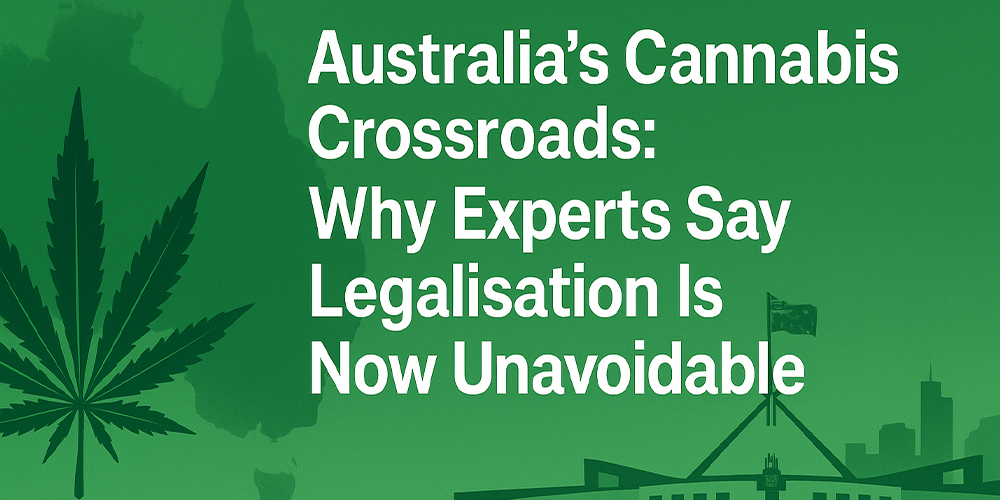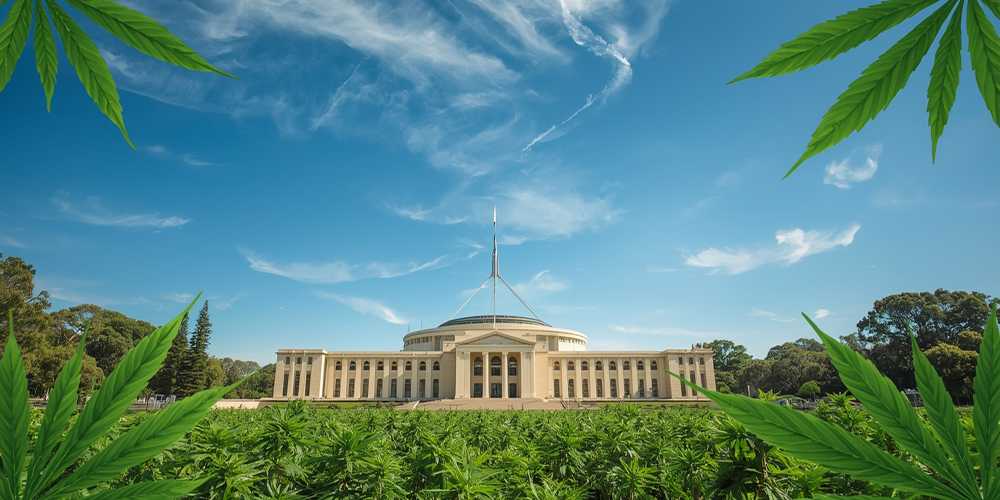
Home » Australia’s Cannabis Crossroads: Why Experts Say Legalisation Is Now Unavoidable
Australia’s Cannabis Crossroads: Why Experts Say Legalisation Is Now Unavoidable
Australia’s cannabis sector has reached a pivotal moment. At this week’s Medicinal Cannabis Industry Australia Conference, the Penington Institute, one of the country’s leading drug policy think tanks, declared that real reform is impossible without confronting the elephant in the room: full legalisation of cannabis.
The timing is critical. The Therapeutic Goods Administration (TGA) is currently reviewing its framework for prescribing and advertising medical cannabis—a system that has grown rapidly in recent years but remains riddled with access barriers and inequities. For many advocates, industry leaders, and patients, the TGA’s review is not enough. They argue that Australia’s dual-track system—where medical cannabis exists under heavy regulation while recreational use remains illegal—is unsustainable.
A Policy Debate at a Breaking Point
At the heart of the debate is a contradiction. Since 2016, when medical cannabis was first legalized in Australia, the number of prescriptions has skyrocketed. By 2024, more than 1.2 million approvals had been granted through the TGA’s Special Access Scheme. Yet, despite widespread prescribing, patients still face high costs, confusing rules, and stigma compared to those accessing other medicines.
“The reality is that many Australians are already using cannabis outside the medical system,” said Penington Institute CEO John Ryan during his conference remarks. “By keeping recreational cannabis illegal, we’re forcing people to choose between a complex, costly medical pathway or the black market. That’s not sustainable.”
Ryan’s comments resonated with industry delegates, many of whom are frustrated by the slow pace of reform. The medicinal cannabis sector, now worth over AUD $650 million annually, sees growth opportunities being stifled by regulatory bottlenecks.
The TGA’s Narrow Lens
The TGA review currently underway is focused on relatively narrow issues: how doctors prescribe cannabis, how advertising is regulated, and how to ensure consistency in product quality. While these questions are important, they do not address the larger policy problem—Australia’s fragmented approach to cannabis.
“Without legalisation, we’re simply tinkering at the edges,” said one industry delegate. “Doctors are being asked to be gatekeepers for what is, in many cases, a wellness or lifestyle product. That creates unnecessary friction and doesn’t reflect the reality of how people use cannabis.”
Critics argue that Australia’s system is creating inequities. Patients in rural areas often struggle to find prescribing doctors. Costs remain high, with some patients paying over AUD $300 per month out-of-pocket, since medical cannabis is not listed on the Pharmaceutical Benefits Scheme (PBS). At the same time, recreational users risk criminal penalties for the same plant—despite growing evidence that prohibition has failed to reduce use.
Legalisation Momentum Builds

The call from the Penington Institute adds to a growing wave of voices urging reform. Globally, more than 50 countries now have medical cannabis programs, and at least 25 jurisdictions—including Canada, Germany, and 24 U.S. states—have legalised recreational use.
Australia has taken tentative steps. The Australian Capital Territory (ACT) legalized personal possession and home cultivation in 2020, though commercial sales remain banned. In Victoria and New South Wales, parliamentary inquiries have considered legalization, with mixed political support.
But the industry believes momentum is shifting. Public opinion polls consistently show over 50% of Australians support full legalisation, with support even higher among younger voters. As Ryan put it, “It’s only a matter of time before politicians catch up with the public.”
Economic Stakes Are Rising
Beyond health and policy, the debate is increasingly economic. Legalisation could unlock billions in tax revenue, job creation, and rural development. A 2023 University of Sydney study estimated that a fully legal recreational market could generate AUD $28 billion in tax revenue over a decade.
Industry insiders point to Canada as a cautionary but instructive case. While Canada’s rollout in 2018 faced challenges with oversupply and regulatory burdens, the country now has a thriving cannabis export market and has largely dismantled its black market. Australian producers, currently restricted to medical exports, could become major players in Asia-Pacific if recreational sales are permitted.
What Happens Next?
The TGA is expected to release its recommendations in late 2025. While no one expects the agency to endorse legalisation outright—it remains outside its mandate—the review could set the stage for broader policy debate in 2026 and beyond.
Legalisation advocates are watching closely to see if the federal government under Prime Minister Anthony Albanese will take a stronger stance. To date, the government has signaled openness to reviewing drug policy but has avoided committing to a timeline for reform.
Meanwhile, companies like Alternaleaf, one of Australia’s largest cannabis clinics, have welcomed the debate. “Legalisation would reduce the pressure on doctors, improve patient access, and align policy with reality,” the company said in a statement following the conference.
Looking Ahead
Australia stands at a crossroads. The medical cannabis sector is booming, but the policy contradictions are growing harder to ignore. The TGA’s review may offer incremental fixes, but the Penington Institute’s message is clear: without legalisation, real reform is impossible.
The question is no longer whether cannabis will be legalised in Australia, but when—and whether policymakers will seize the opportunity to design a system that balances public health, economic growth, and social equity.

